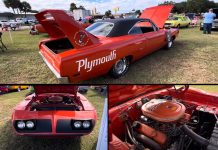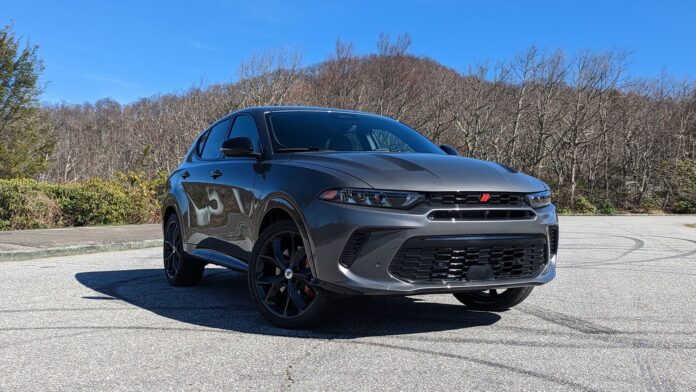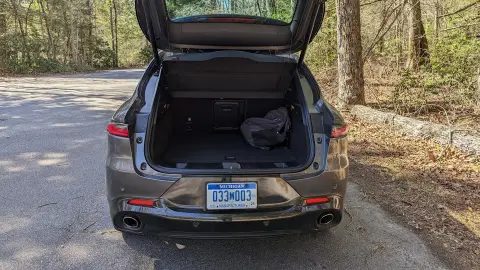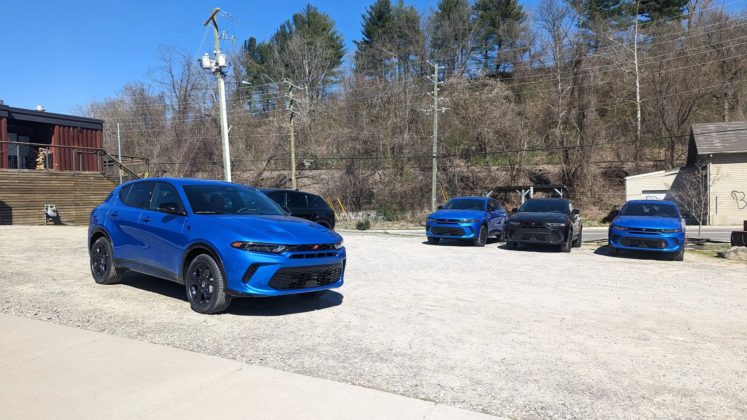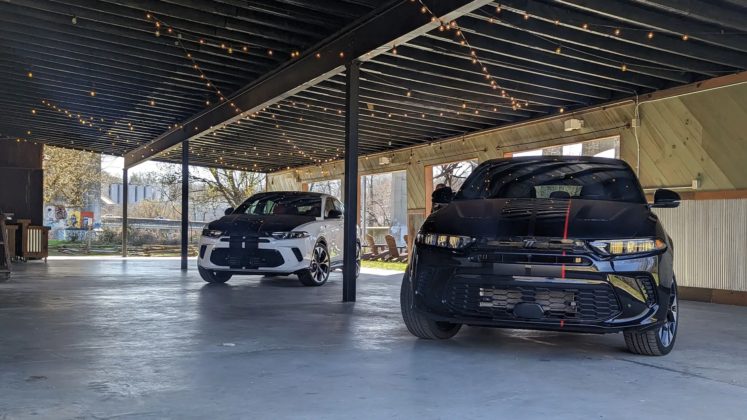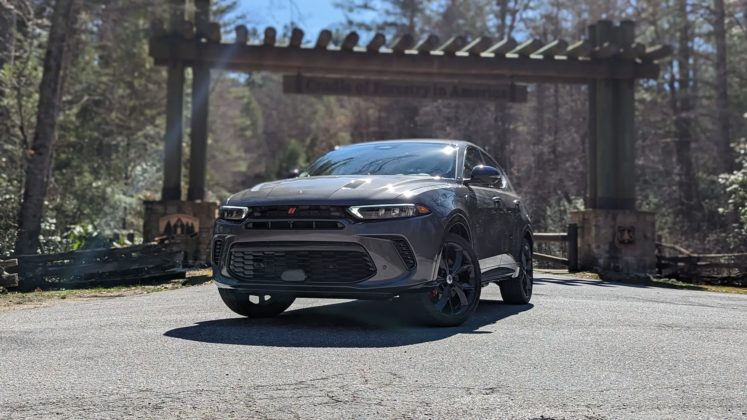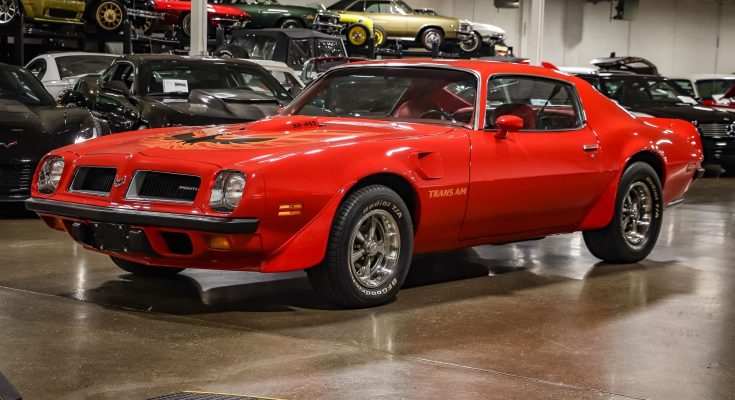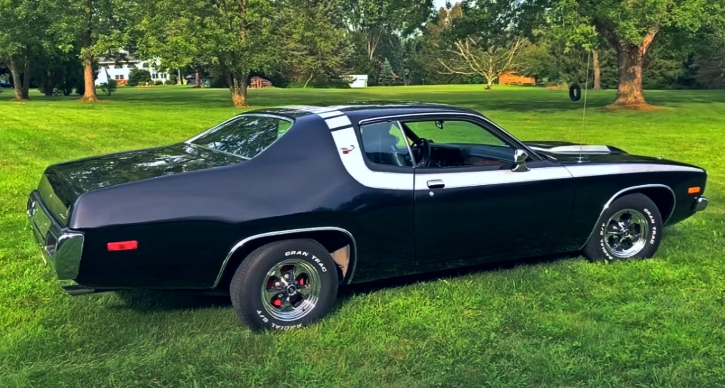By now, you’ve likely heard of the 2023 Dodge Hornet. It’s Dodge’s new compact SUV that’s aiming at bringing a little Muscle to a segment that’s typically known for everything but. It has the right looks, claims best-in-class handling, and its power certainly fits the bill. If that doesn’t lure you in, the name that throws back to Dodge’s decades-long love for aggressive insects will.
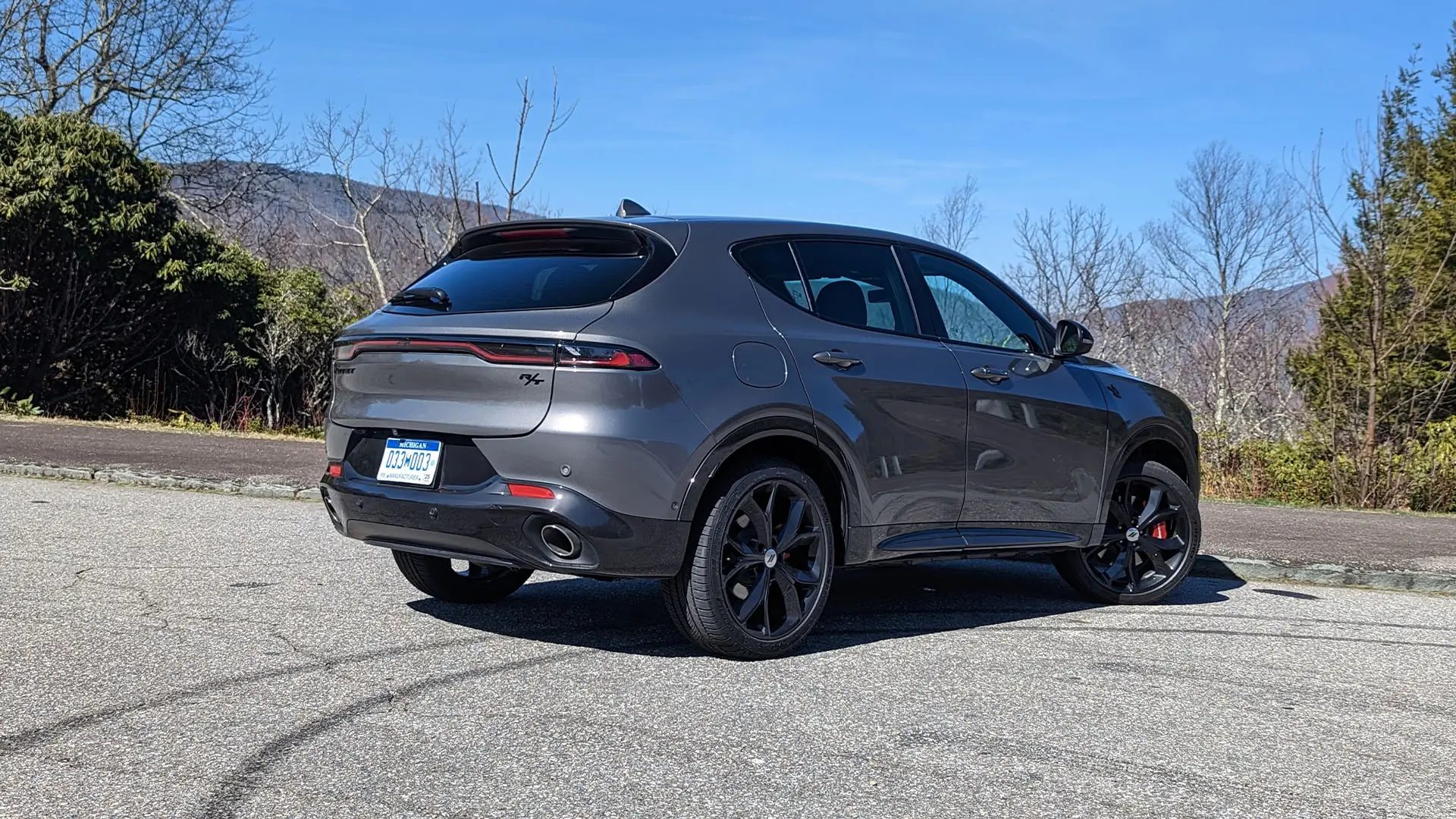
Of course, declaring a 1.3-liter plug-in-hybrid compact crossover as a muscle car to any degree is sure to get folks fired up. But this isn’t the first time we’ve seen Dodge play with segment norms. Remember the second-generation Challenger, Shelby Charger, and Dodge Omni? Pepperidge Farm remembers.
Still, it’s hard to just accept the fact that Dodge says there’s anything muscular about a hybrid with the 2023 Challenger SRT Demon 170 setting the bar so high, even if the folks behind it are claiming that it isn’t the kind of hybrid mere mortals are used to. Dodge says that the Hornet’s hybrid powertrain places more of an emphasis on performance, with improved mileage being a byproduct. And it’s paired the R/T with all kinds of performance goodies that are clearly targeted at enthusiasts like sporty suspension, big brakes, and the temporary PowerShot electric boost function. Dodge affectionately refers to it as the “gateway to muscle” rather than a proper “muscle car.”
The R/T is certainly a little feistier than the Hornet GT, but no matter how attractive the upgrades are, I couldn’t help but ask myself, “Could there really be anything muscular about a hybrid crossover?” Turns out, the answer is “Sort of.” While the Hornet is far from a conventional muscle car, it’s a solid performer in its own right, dishing up enough pep and even a little nostalgia to both connect with old-school muscle fans and carve out its own little niche in the crossover segment.
2023 Dodge Hornet R/T Specs
- Base price: $44,995 ($52,305 as tested)
- Powertrain: 1.3-liter turbocharged four-cylinder with a plug-in hybrid electric motor | 15.5-kWh lithium-ion battery | 6-speed automatic transmission | all-wheel drive
- Horsepower: 263 (288 with PowerShot)
- Torque: 383 lb-ft
- Seating capacity: 5
- Curb weight: 4,140 pounds
- Towing capacity: 2,000 pounds
- Cargo volume: 22.9 cubic feet
- Ground clearance: 6.1 inches
- 0-60 mph: 5.6 seconds (with PowerShot)
- Top speed: 128 mph
- EPA fuel economy: TBA
- Quick take: A fun plug-in SUV that keeps in touch with muscle car enthusiasts while remaining comfortable and practical.
- Score: 7/10
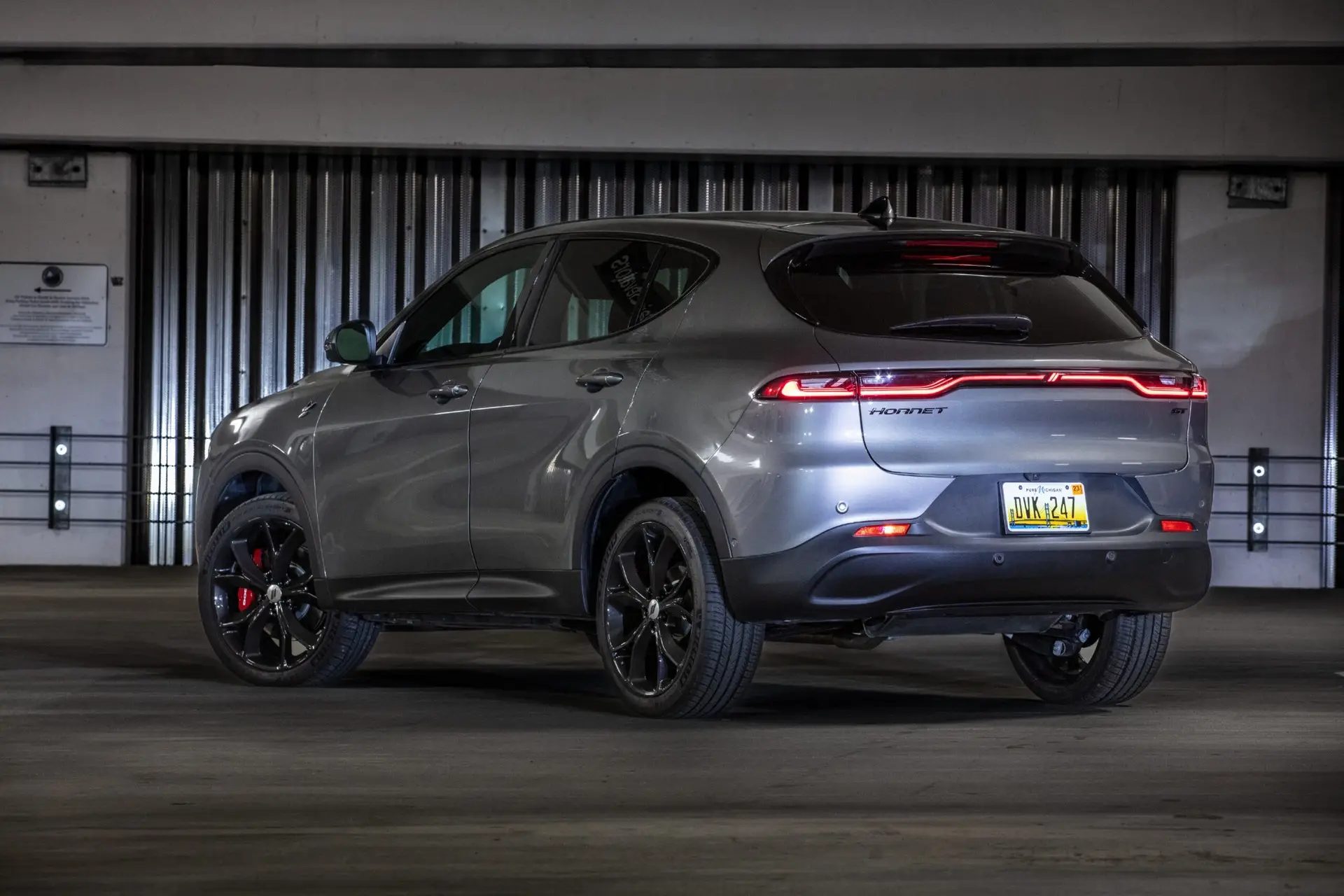
A Solid, Practical Package Beneath a Muscular Badge
It’s no secret that the new Dodge Hornet shares a lot with the Alfa Romeo Tonale—it’s even built in the same plant in Italy—but it’s a bit more than a simple rebadge. The Hornet has distinct Dodge design elements, with styling something of a blend of the Charger and a Durango.
Obviously, the Hornet’s interior is a lot different than the muscle cars I’m used to. Well, everything is different given 1969 was a long, long time ago. There’s way more tech in here, and everything works and works well, too. The cockpit is designed so that everything is tilted toward the driver, making it easy to tinker with whatever radio or HVAC control you need to with minimal, if any, distraction from the road. Like pretty much all modern cars, steering wheel controls simplify this even further, but the main draw would probably be the ability to swiftly switch through hybrid, E-save, and electric mode—getting to sport mode is achieved by selecting hybrid mode, then pressing the sport mode button on the dash just below the wheel.
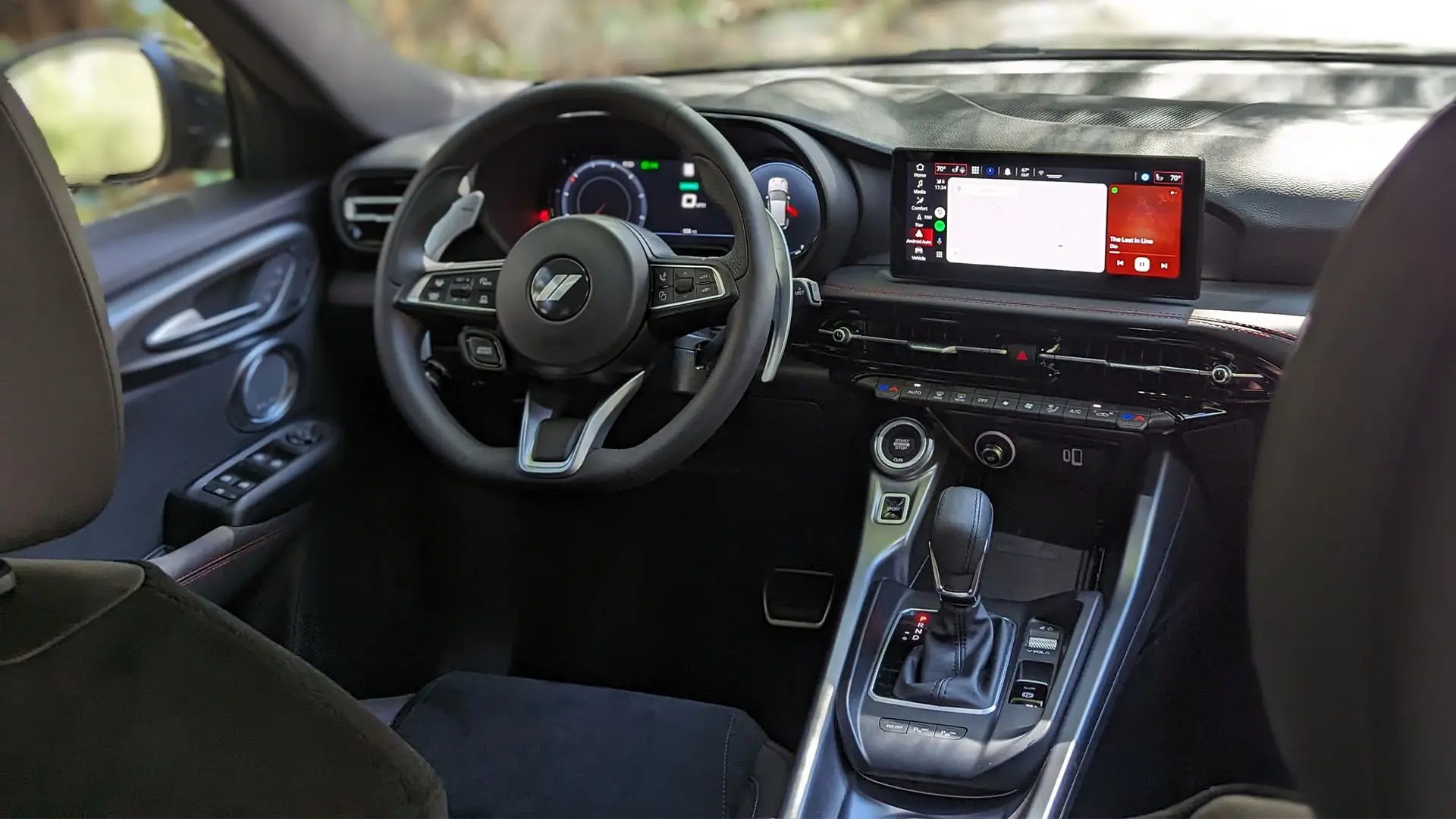
Standard is a 12.3-inch digital gauge cluster and a 10.25-inch central touchscreen running Uconnect 5, wireless Android Auto, and Apple CarPlay. This screen proved to be quite easy to use when doing things like managing Bluetooth connectivity and navigation and is where the 360-degree camera system projects its live imagery to simplify parking.
This being an SUV, room behind this command center is generous. It seats five and, at six feet tall, I had no problem sitting behind the driver’s seat with it set to my liking. Certainly far more comfortable than the rear of my Charger.
Under the hood, the 2023 Hornet R/T is anything but a brutish V8-powered muscle car. In all reality, a big part of what makes the all-wheel-drive compact SUV an R/T is the 1.3-liter four-cylinder and electric motor mated to a 15.5-kWh battery. This combination is expected to yield better mileage than the hybrid-less 2.0-liter GT’s 29 highway mpg, but, again, Dodge claims that’s simply a side benefit of the hybrid powerplant. The fact that solid economy numbers have yet to be released at the time of testing further drives the point.
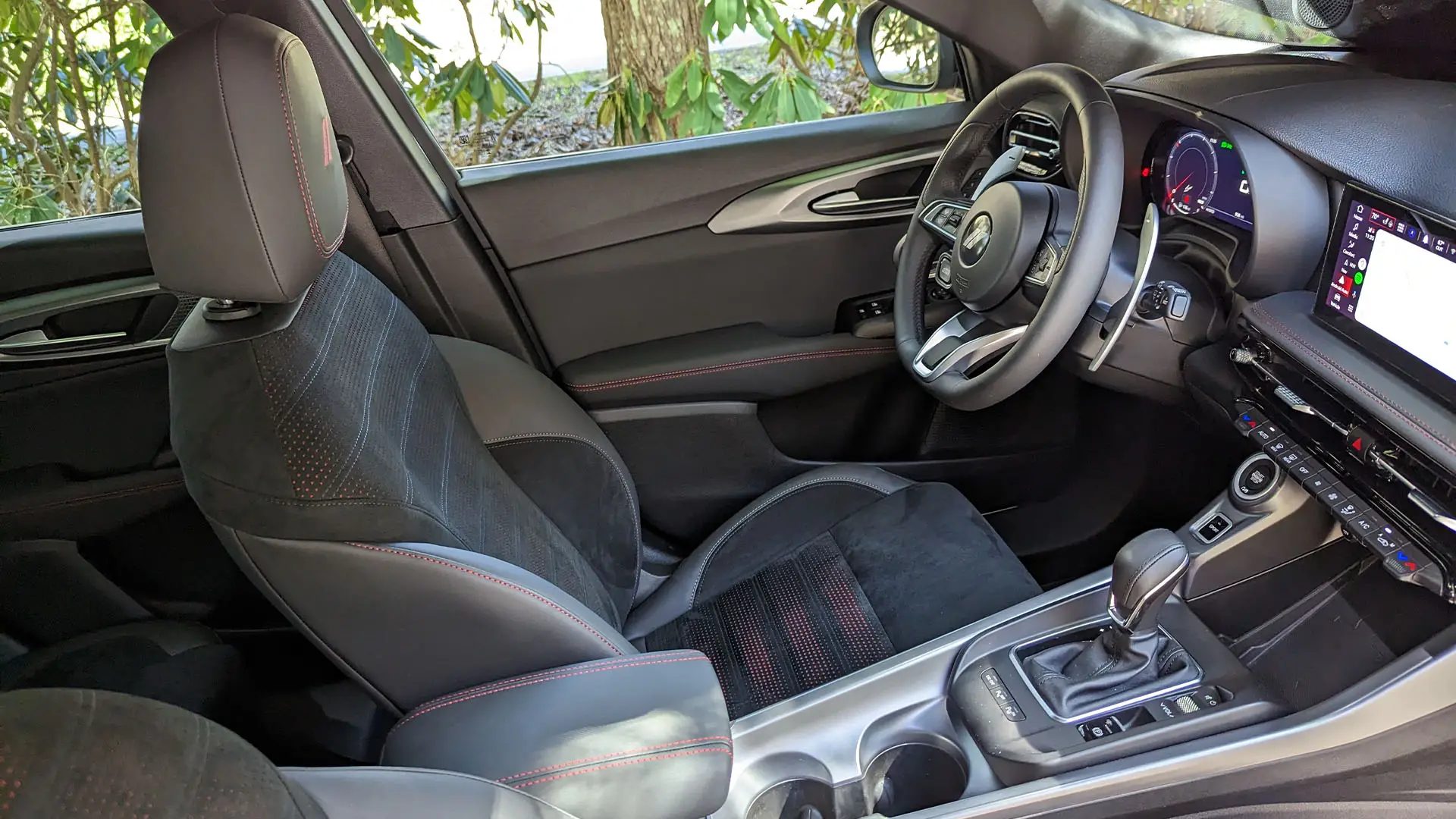
All Hornets come standard with Koni shocks, but moving to the R/T sets it up with dual-mode suspension, Brembo brakes, and 18-inch wheels. This version pumps out up to 288 horsepower and 383 lb-ft of torque, capable of moving from zero to 60 mph in 5.6 seconds with the use of PowerShot.
Putting The Hornet to The Test
The designated test route in the car started in downtown Asheville, North Carolina taking us across the freeway and out to the winding roads cutting through the Blue Ridge mountains and eventually back to town. Even with sport mode engaged and big Brembo brakes, the R/T tiptoes comfortably through city streets. Of course, the ample power and semi-electric torque were handy to have in traffic as well, passing other drivers without issue, while those brake-by-wire Brembos snapped to stop quickly.
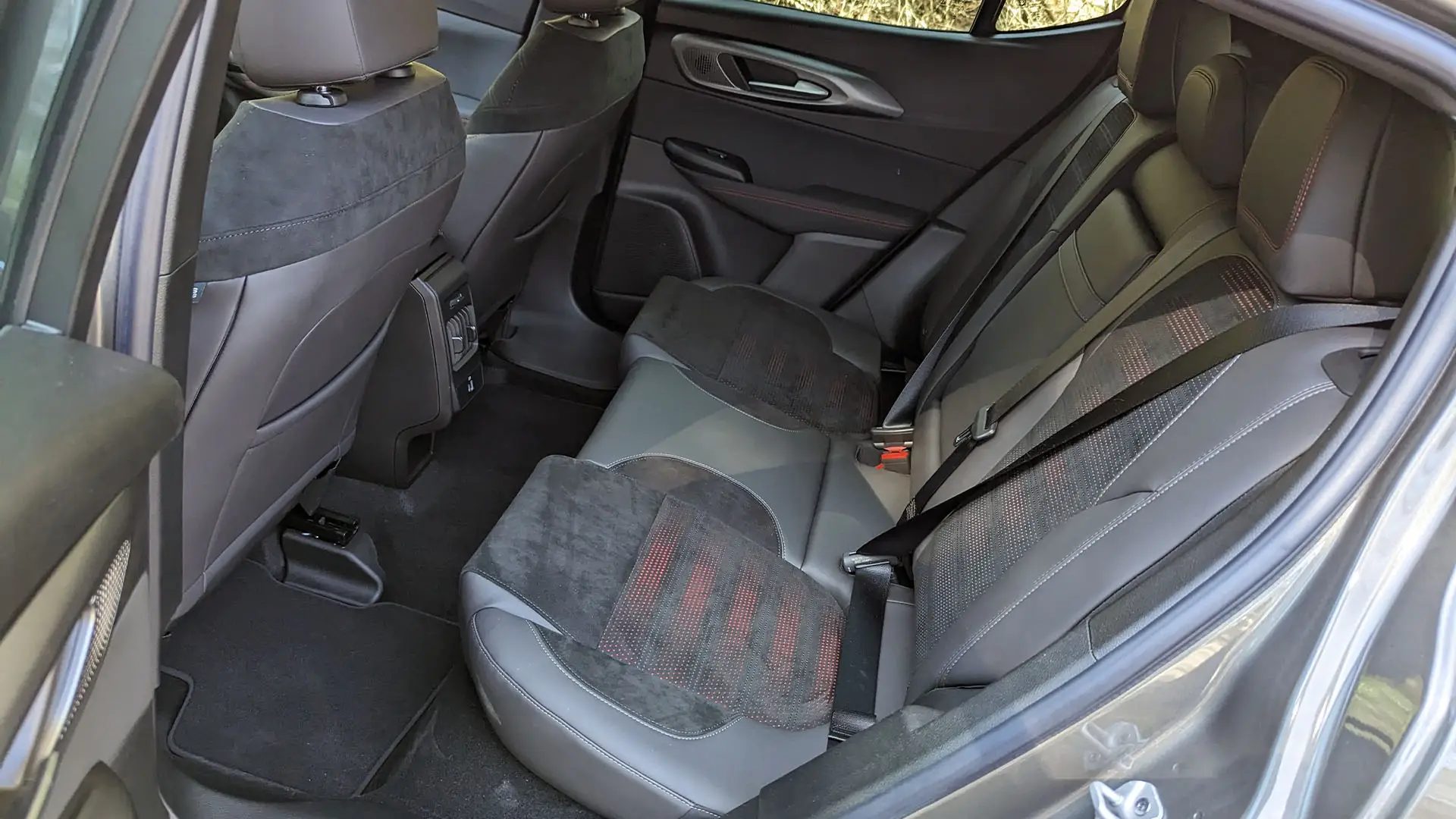
The handling really started to live up to Dodge’s claims as I entered the winding trails cutting through the Pisgah National Forest. It was here that I also found that the Hornet R/T offers two different driving experiences. It can be every bit as comfortable and docile as you want it to be on tight, winding roads, and is more than confident at lower speeds. But if you’re against the clock or just looking to have a little fun, well, the Hornet’s got you covered there too.
Selecting sport mode stiffens the suspension and optimizes gear shifts. These changes, paired with the rest of the R/T package make for a surprisingly fun experience. The Hornet may be a 4,000-pound SUV, but it really didn’t feel like it. Body roll was impressively low, and the big brakes were more than enough to keep speeds in check as I went about as far as my nerve would let me push an SUV on public roads.
Sport mode also unlocks PowerShot, a feature with which Dodge’s own twist on the whole hybrid thing becomes apparent. It’s essentially electric nitrous, as the electric motor goes full-bore supplying a 25-hp boost, shaving 1.5 seconds off the zero to 60 mph time. The 288-hp and 5.6-second zero to 60 mph ratings Dodge slaps on the Hornet are achieved with PowerShot. To engage it, you pull on both shift paddles. Once the color-coordinated icon appears on the dash, push the gas pedal past the PowerShot detent, and you get an unfiltered 45-second blast of the R/T’s max power, followed by a 15-second cool-down period.
PowerShot doesn’t exactly transform the Hornet into a Hellcat, but it’s a whole lot of fun to make use of when coming out of a slow turn onto a long straight where you want to get up and run.
R/T vs GT
At launch, the Hornet comes as the R/T plug-in tested here or as a gas-only GT. Both are AWD, but that’s about all they have in common in terms of driveline, as the GT is powered by the 2.0-liter Hurricane4 producing 265 hp and 295 lb-ft of torque, and is paired with a nine-speed automatic transmission.
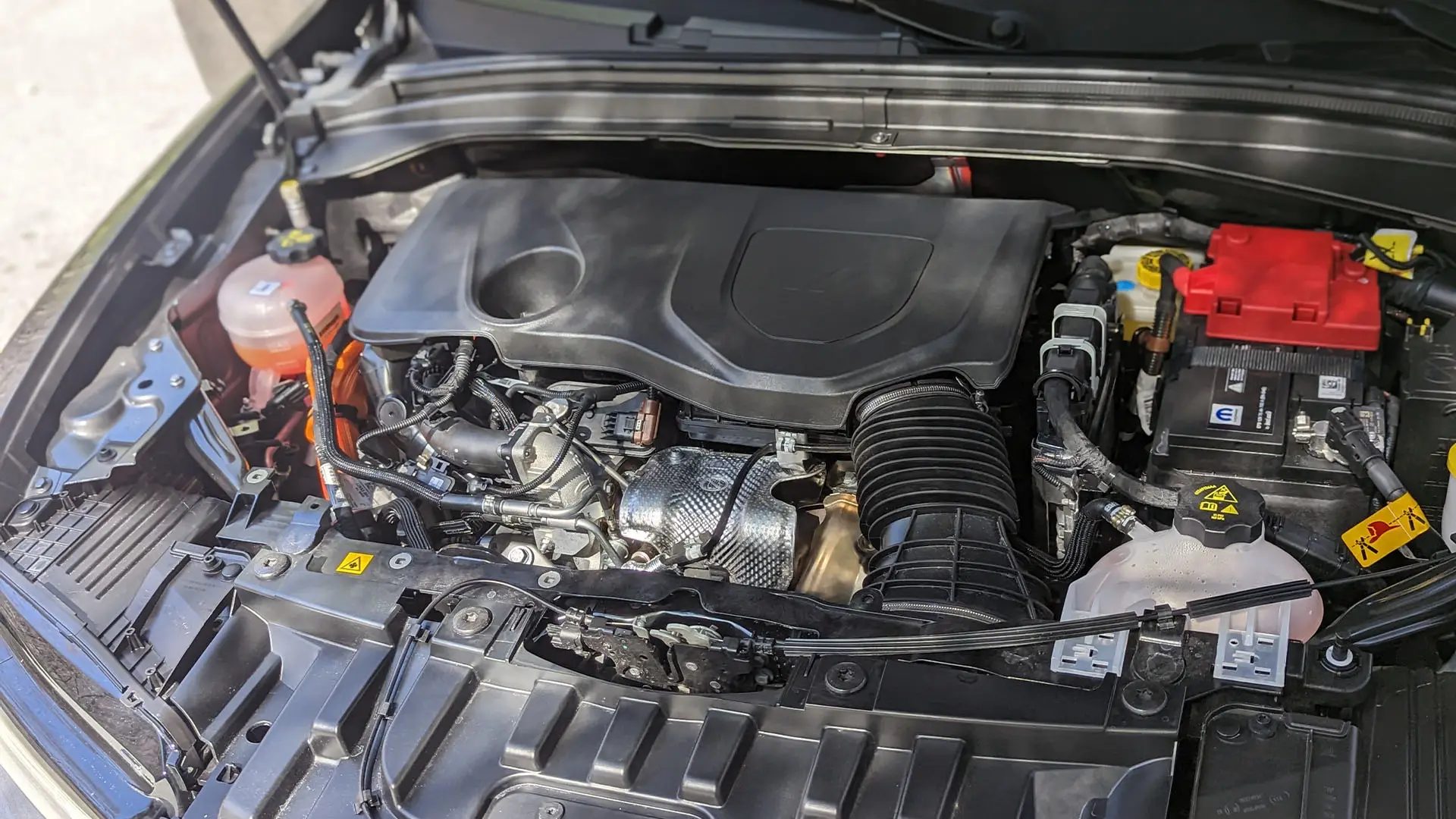
The GT also sits a little higher, with eight inches of ground clearance over the R/T’s 6.1, and offers 29 cubic feet of cargo room over the R/T’s 22.5. Trim differences extend into the cabin with the loss of shift paddles, and of course, no PowerShot to toy with, but either can be set up with the Track Pack and/or Plus trim levels for leather interior and other, more luxurious features.
Compared to the R/T, the GT feels more like a utility vehicle, and the ride height difference means the suspension does indeed feel a little softer. Still, it’s plenty capable at maneuvering through traffic with ease, and can even be plenty of fun to dart around with. It’s also 400 pounds lighter and $10,000 cheaper, so I’m sure we’ll see this being the volume seller and the theoretical Hornet tuner’s model of choice.
Speaking of tuning, GLH concepts do exist for either version of the Hornet. GLH is an acronym that stands for “Goes Like Hell” and is a callback to the Omni trim level of the same name. These versions of the Hornet are outfitted with upgrades available through the Direct Connection catalog—yet another nostalgic name to tug at the heartstrings of many lifelong Mopar fans—to make for an even nastier version of the Hornet enthusiasts will surely appreciate.
Direct Connection is a program that offers a list of factory-backed upgrades. And if you work with certain licensed Dodge dealers, you can have those upgrades installed and even backed by a warranty. Stage kits with 50-state-legal engine calibrations and tweaks to the package at large make it possible for buyers to tailor the Hornet to their liking if the stock GLH, R/T, or GT misses the mark.
A Good Fit for Growing Up
There are some things the Hornet R/T could do better, as there’s certainly room for some performance improvements. Of course, equal but opposite arguments could be made for someone wanting more hybrid than muscle. But that’s what makes the Hornet R/T what it is. It’s something in between for folks who want a little of both, and it’s hard to argue with what you’re getting for the price.
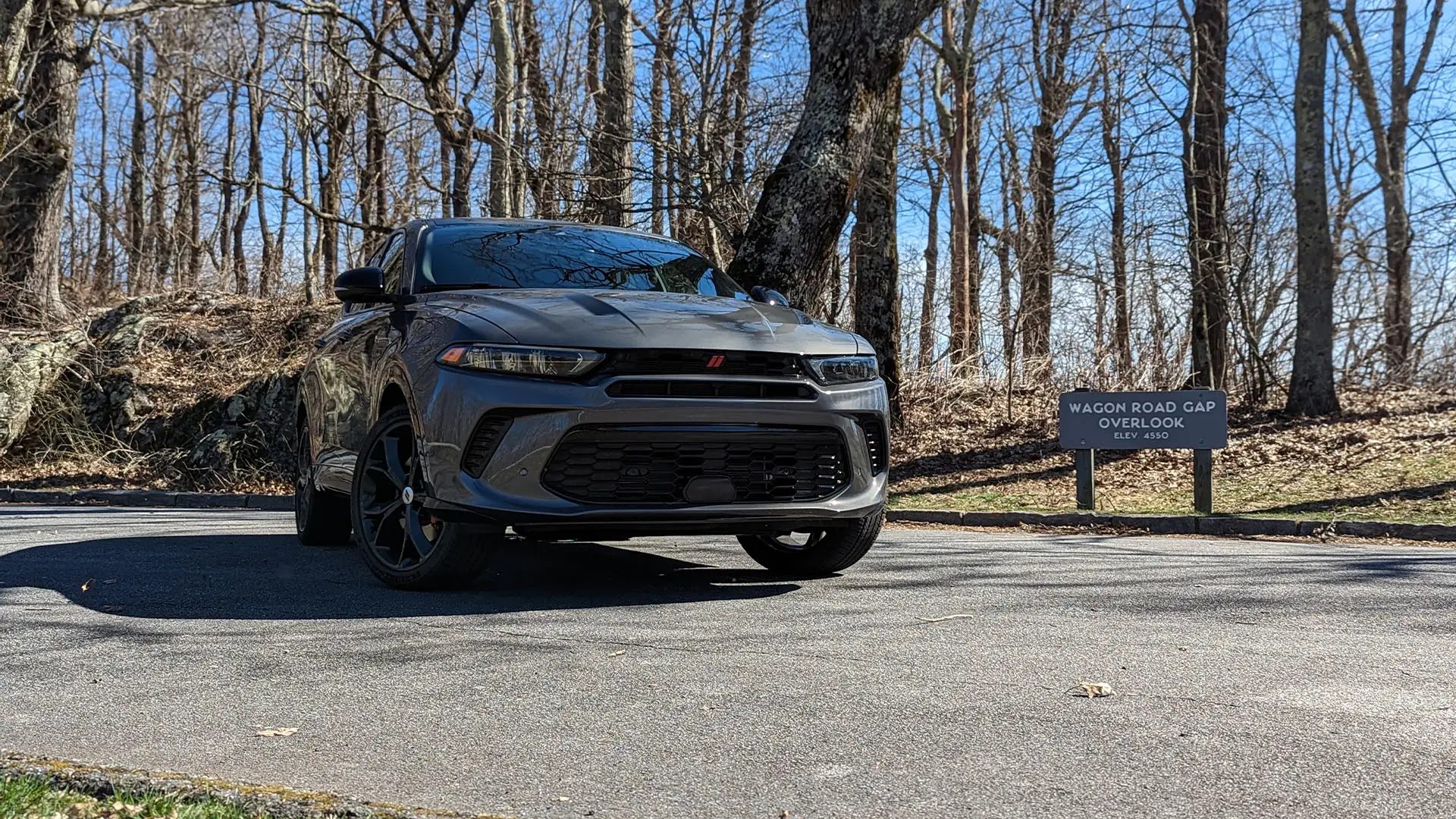
We live in a world where people usually only get to have one car in their lives. That means a lot of compromises have to be made. Most need something that can comfortably seat a family, has plenty of room for cargo, and is good on gas. It’s hard to find all of those features and still have something that at least has some appeal to an enthusiast. Life happens. Bills get bigger, families grow, and prized muscle cars get replaced with soul-sucking hybrids that cause existential crises. The Hornet R/T does everything any other compact plug-in SUV will do, but it can at least keep in touch with your inner muscle car enthusiast on some level.



